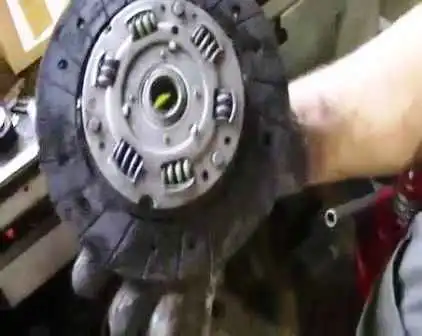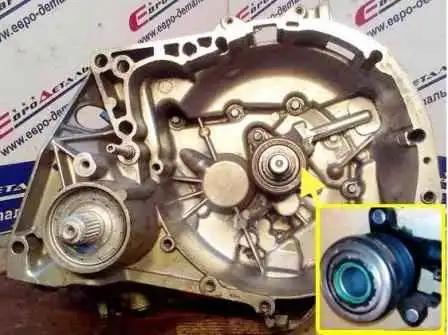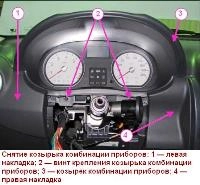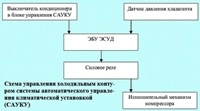The clutch of the car Lada Largus is single-disk, dry type.
A pressure plate with a central diaphragm spring and a driven plate is installed, with friction linings attached with rivets
The pressure plate is mounted in a stamped steel casing and attached to the flywheel with six bolts (picture 1).

The same clutch is installed on this car with a manual transmission.
Only the drive differs depending on the gearbox model.
On a vehicle with a JH3 gearbox, the clutch is controlled by a cable, while on a vehicle with a JR5 gearbox, the clutch is controlled by a hydraulic actuator.
And on a car with a JH3 gearbox, the release bearing moves along the guide sleeve using a fork, while on a car with a JR5 gearbox, a hydraulic slave cylinder is installed directly on the gearbox clutch.

The driven disk (Fig. 2) is mounted on the splines of the input shaft of the gearbox and is clamped by a diaphragm spring.

The release bearing 1 (fig. 3), in the JH3 box is controlled by the fork 2.
The release bearing is of closed type and does not require lubrication during operation.
The fork is inserted into the grooves of the release bearing clutch.
A rubber boot is installed on the shoulder of the fork.
The fork is controlled by a cable that is inserted into the fork at one end and attached to the clutch pedal at the other end.
The release bearing in the JR5 gearbox is integrated with the slave cylinder attached to the clutch housing with two bolts.
The release bearing in the JR5 box in Figure 4.

The hydraulic clutch release actuator for the JR5 gearbox consists of a master cylinder, which is installed in the engine compartment, and a slave cylinder.
The hydraulic drive is connected using a tube and a hose.
The master cylinder is connected to the reservoir, which is common to the brake system and clutch.
Possible clutch failures and solutions
Cause of malfunction - remedy
Incomplete clutch disengagement (clutch leads)
Insufficient full travel of the clutch pedal - Adjust the initial setting of the clutch cable
Distortion of the driven disk (end runout more than 0.5 mm) - Straighten or replace the disk
Driven disc hub stuck on input shaft splines - Clean splines, flush with solvent. If the splines are worn, replace the input shaft or driven disc
Distorted or warped pressure plate - Replace pressure plate assembly
Loose rivets or broken friction linings on driven disc - Replace linings or driven disc, check disc end runout
Violation of the clutch cable or clutch wear compensation mechanism - Replace the cable
Air entering the hydraulic system of a car with a JR5 gearbox - Bleed the clutch hydraulic
Leaking fluid from master or slave cylinder - Replace faulty cylinder
Incomplete engagement of the clutch (clutch slips)
Increased wear or burnt disc friction linings - Replace friction linings or driven disc assembly
Oiling the friction linings of the driven disk, flywheel and pressure plate surfaces - Wash the oiled surfaces with mineral spirits, replace worn or damaged gearbox and engine oil seals.
Check for oil leakage through the flywheel mounting bolts, if there is a leak, install the bolts on the sealant
Clutch Actuator Damage or Seizure - Eliminate causes causing seizing. Replace damaged parts
Clutch jerks
Oiling the friction linings of the driven disk, flywheel surfaces and pressure a lot of disk - Thoroughly wash oily surfaces with mineral spirits, replace worn or damaged gearbox and engine oil seals.
Check for oil leakage through the flywheel mounting bolts, if there is a leak, install the bolts on the sealant
Clutch Actuator Stuck - Eliminate the cause of the seizing. Replace damaged parts
Surface damage or warping of pressure plate - Replace pressure plate assembly
Increased noise when engaging the clutch
Breakage of driven disc damper springs - Replace driven disc assembly
Increased noise when disengaging the clutch
Worn, damaged, leaking lubricant from clutch release bearing - Replace bearing











